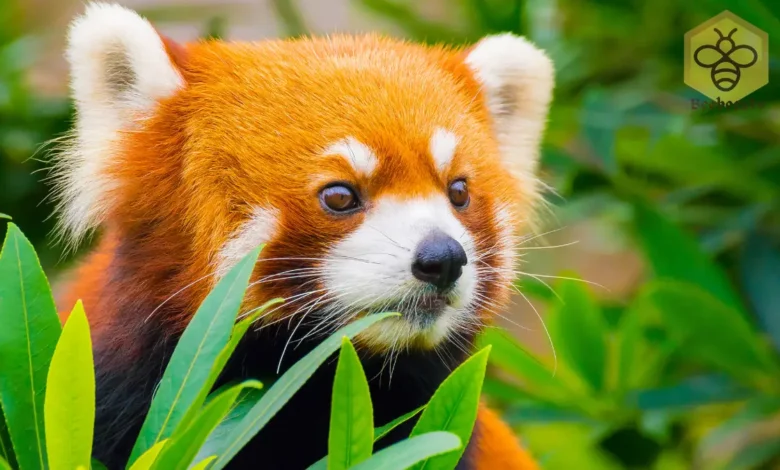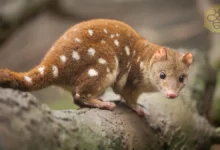Red Panda: A Hidden Gem of the Himalayas

The Red Panda: A Precious Gem of the Himalayas
The Red Panda
Introduction
Red pandas, with their distinctive reddish-brown fur, bushy tails, and captivating charm, have captured the hearts of nature enthusiasts worldwide. These elusive creatures are native to the Eastern Himalayas and Southwestern China, where they inhabit temperate forests with bamboo understories.
Scientific Name
Ailurus fulgens
Common Names
Red panda, Lesser panda, Himalayan raccoon
Scientific Classification
| Domain | Eukaryota |
| Kingdom | Animalia |
| Phylum | Chordata |
| Class | Mammalia |
| Order | Carnivora |
| Family | Ailuridae |
| Genus | Ailurus |
| Species | Ailurus fulgens |
Physical Characteristics
- Size: Red pandas are relatively small mammals, measuring approximately 16-26 inches (41-66 cm) in length, excluding their tail.
- Weight: They typically weigh between 8-13 pounds (3.6-6 kg).
- Appearance: Red pandas boast a striking appearance with a reddish-brown coat, a bushy tail adorned with black and white rings, and distinctive black and white facial markings. Their large, round ears and long, bushy tail further enhance their unique charm.
Habitat and Behavior
- Habitat: Red pandas are primarily found in temperate forests with bamboo understories in the Eastern Himalayas and Southwestern China.
- Solitary Nature: They are predominantly solitary creatures, except during mating season.
- Arboreal Lifestyle: Red pandas are well-adapted to life in trees and are excellent climbers.
- Nocturnal Habits: They are most active at night, spending their days resting in tree hollows or on branches.
- Bamboo Diet: Red pandas are primarily herbivores, relying on bamboo shoots, leaves, fruits, and occasionally insects for sustenance.

Reproduction
- Mating Season: Red pandas typically mate in late winter or early spring.
- Gestation Period: The gestation period is around 90-110 days.
- Litter Size: Litters usually consist of one to four cubs.
- Parental Care: Mother red pandas are devoted to their young, providing care and protection for several months.
- Lifespan: In the wild, red pandas can live for up to 8-10 years.
Conservation Status
- Endangered Species: Due to habitat loss, fragmentation, poaching, and the illegal pet trade, red pandas are classified as “Vulnerable” on the IUCN Red List.
- Conservation Efforts: Numerous conservation organizations and initiatives are working tirelessly to protect red panda populations and their habitats.
FAQs
- Why are red pandas called “red pandas”?
While they share some physical similarities with pandas, they are not closely related. The name “red panda” likely stems from their reddish-brown fur.
- What do red pandas eat?
Red pandas primarily rely on bamboo shoots for sustenance, but they may also consume other plant matter, such as leaves, fruits, and occasionally insects.
- Where do red pandas live?
These elusive creatures are native to the Eastern Himalayas and Southwestern China, inhabiting temperate forests with bamboo understories.
- Are red pandas endangered?
Yes, red pandas are classified as “Vulnerable” on the IUCN Red List due to habitat loss and other threats.
- What can be done to protect red pandas?
Supporting conservation organizations, raising awareness about the plight of red pandas, and reducing the consumption of products that contribute to habitat destruction can all help protect these magnificent creatures.
Conclusion
Red pandas are truly remarkable animals that deserve our admiration and protection. Their unique adaptations, captivating appearance, and endangered status make them a symbol of conservation efforts worldwide. By understanding and appreciating these fascinating creatures, we can contribute to their survival and ensure that future generations can marvel at their beauty.


